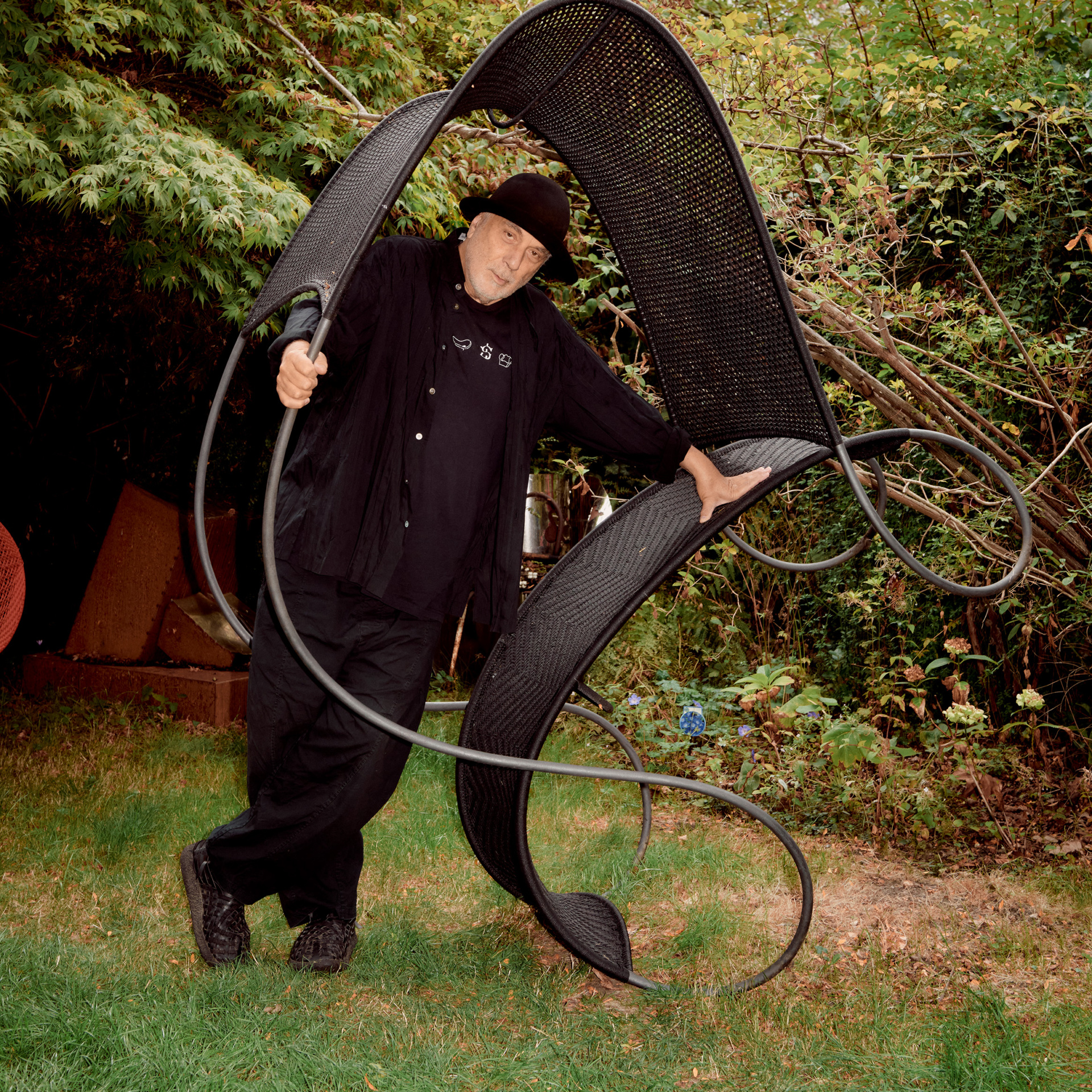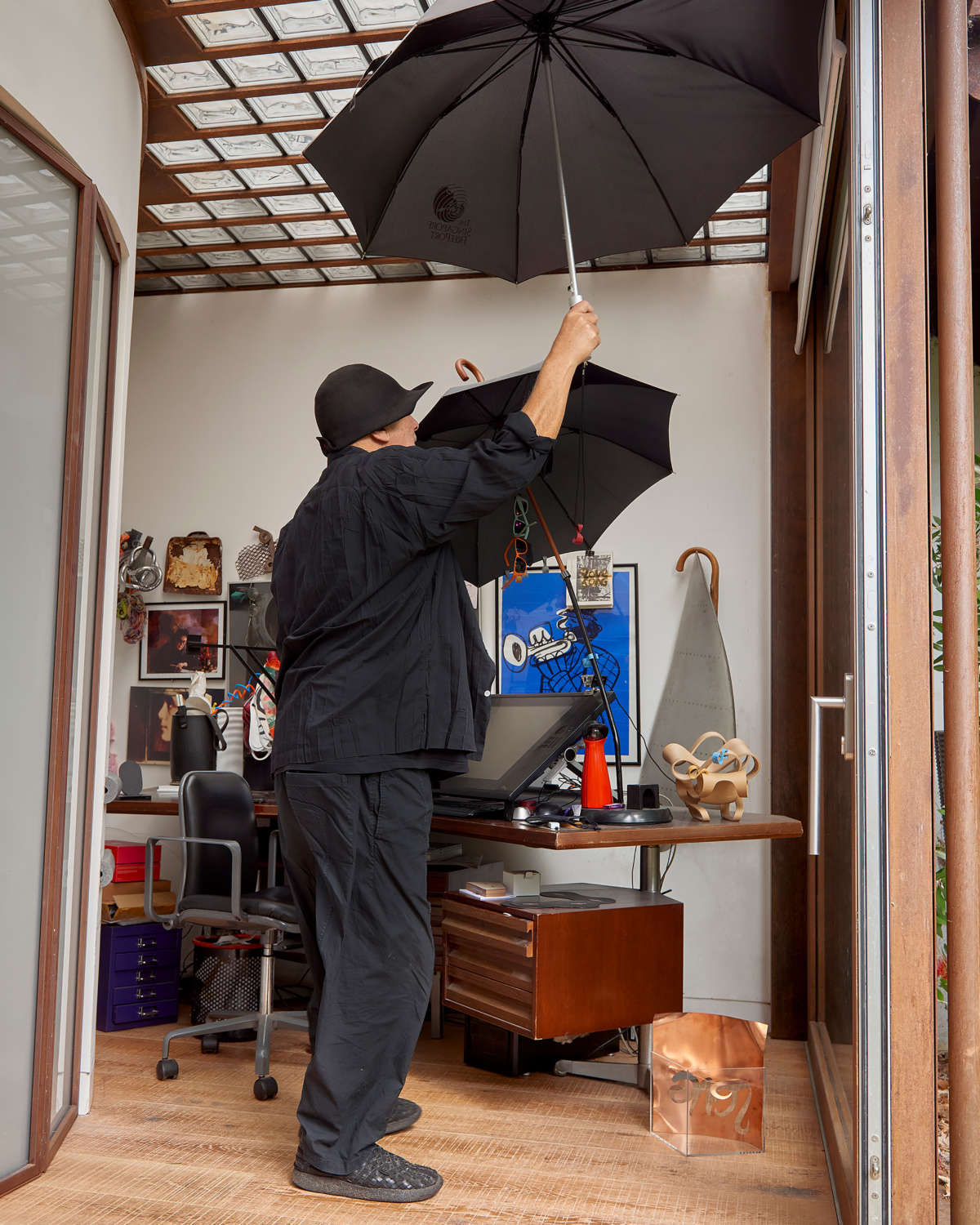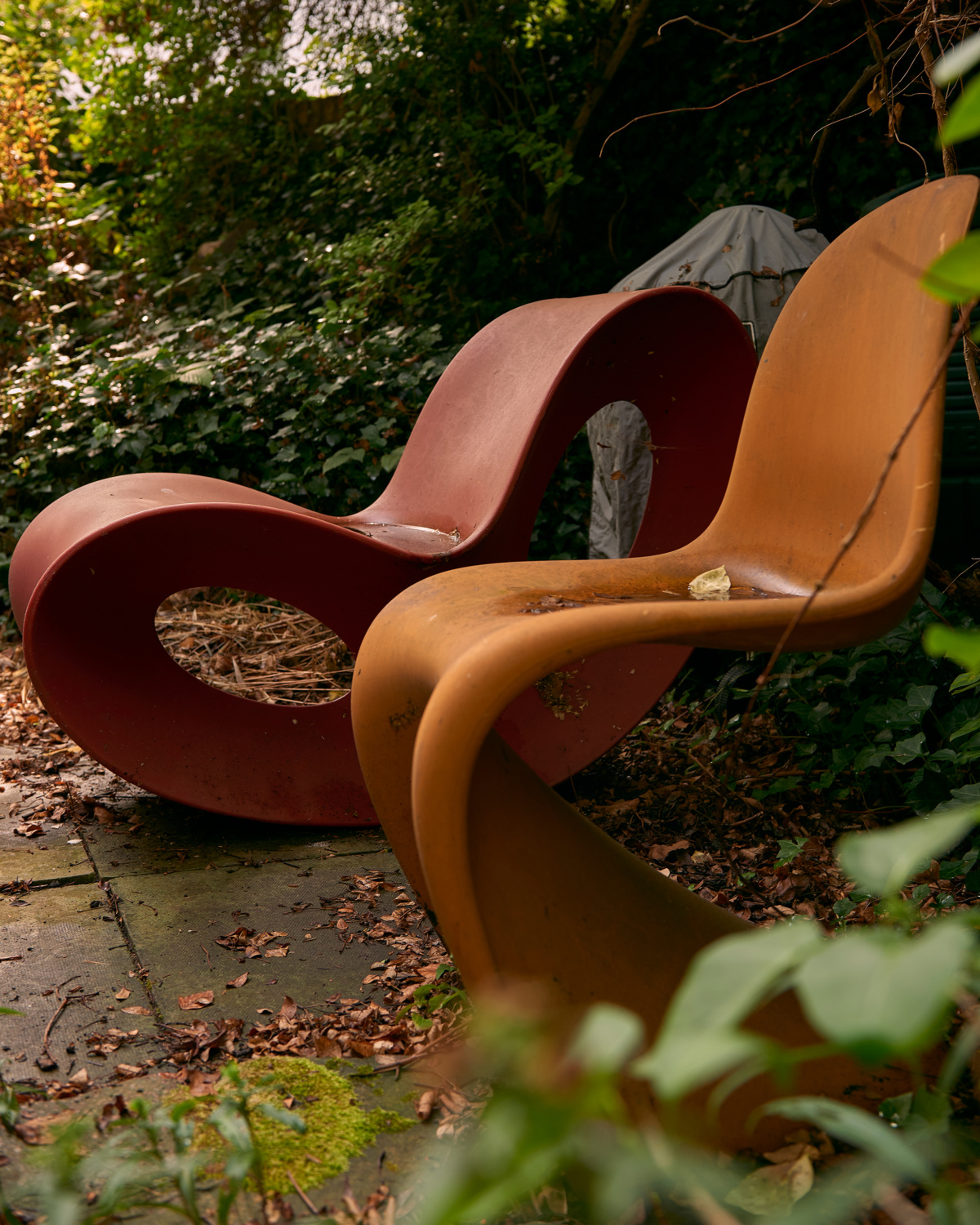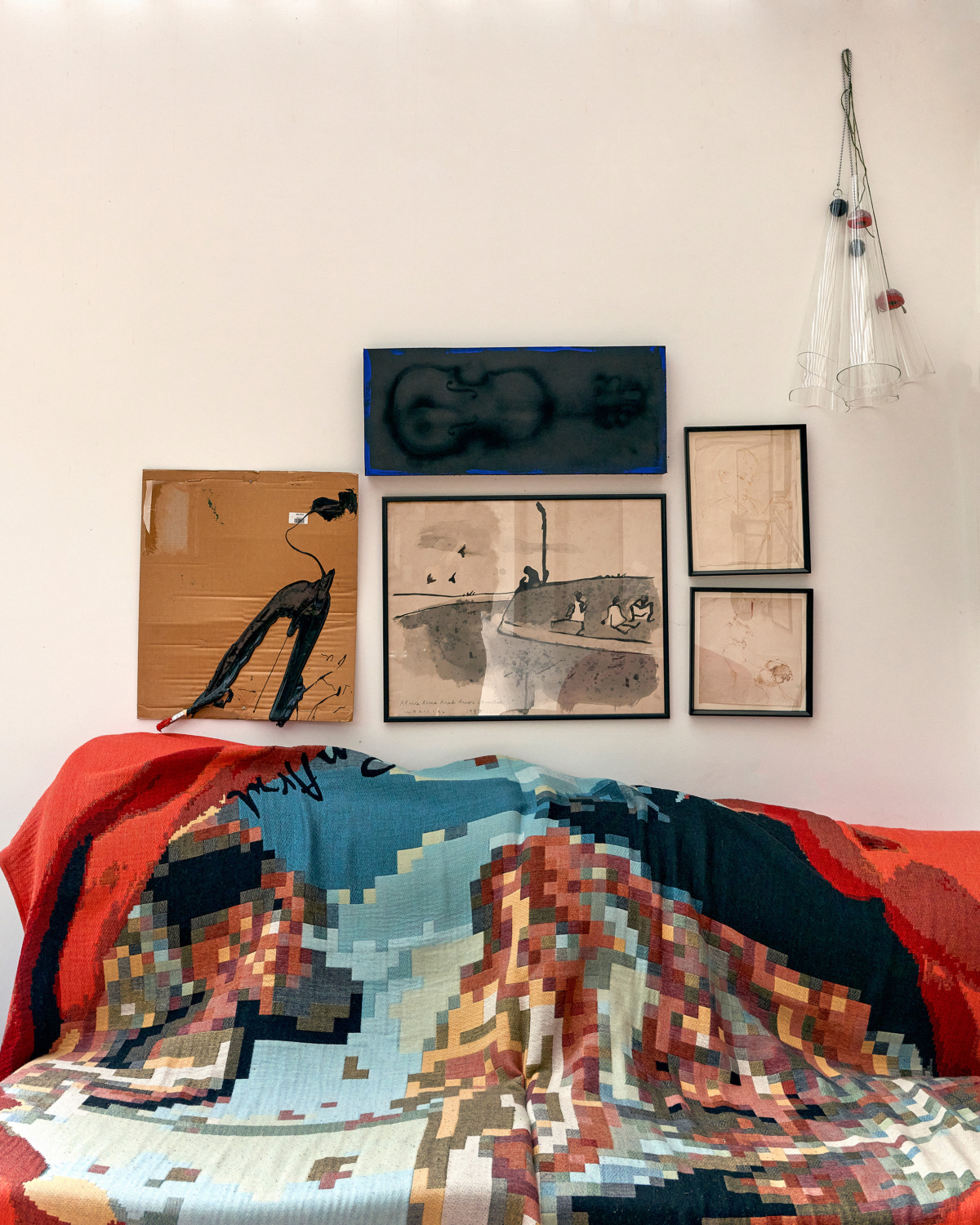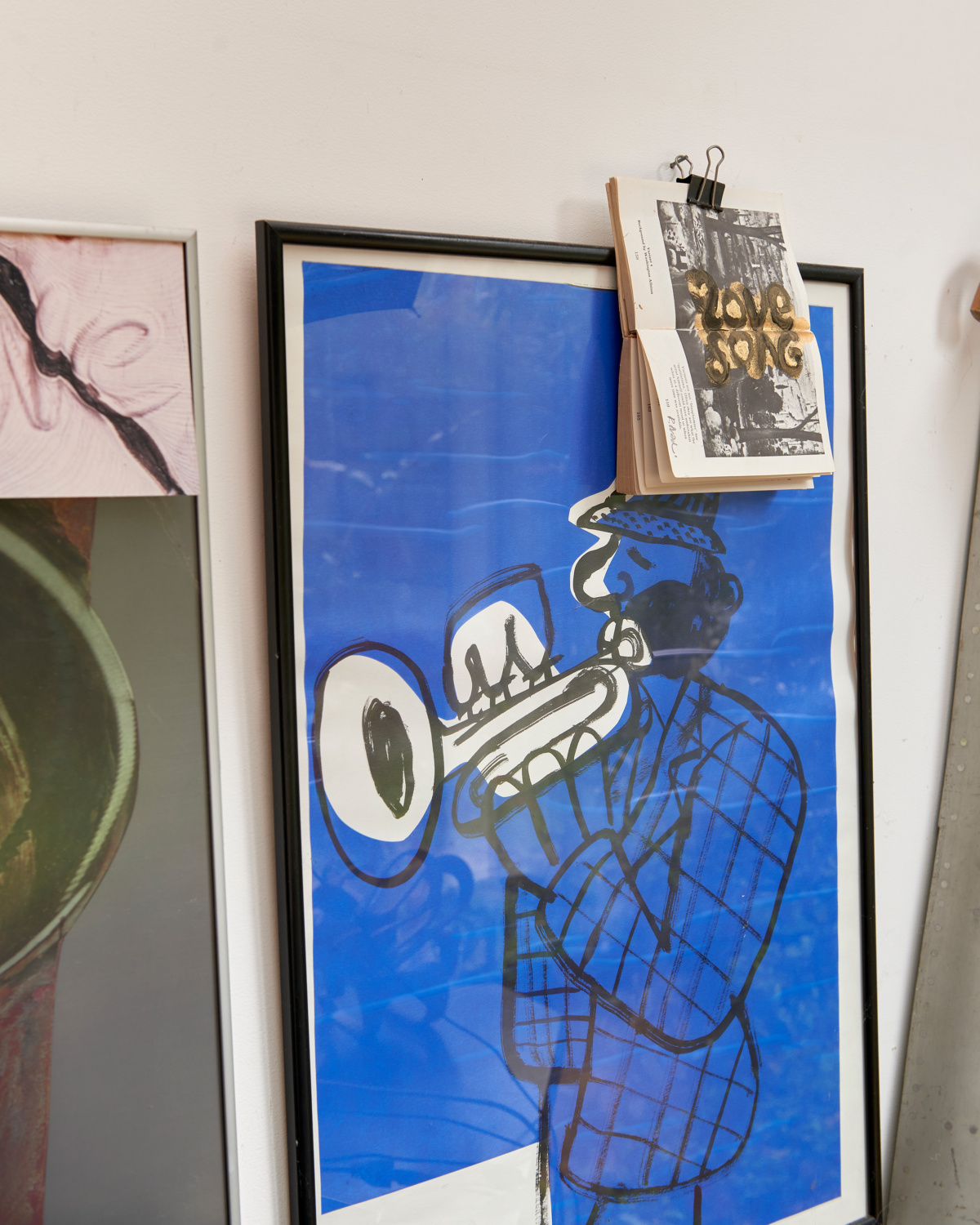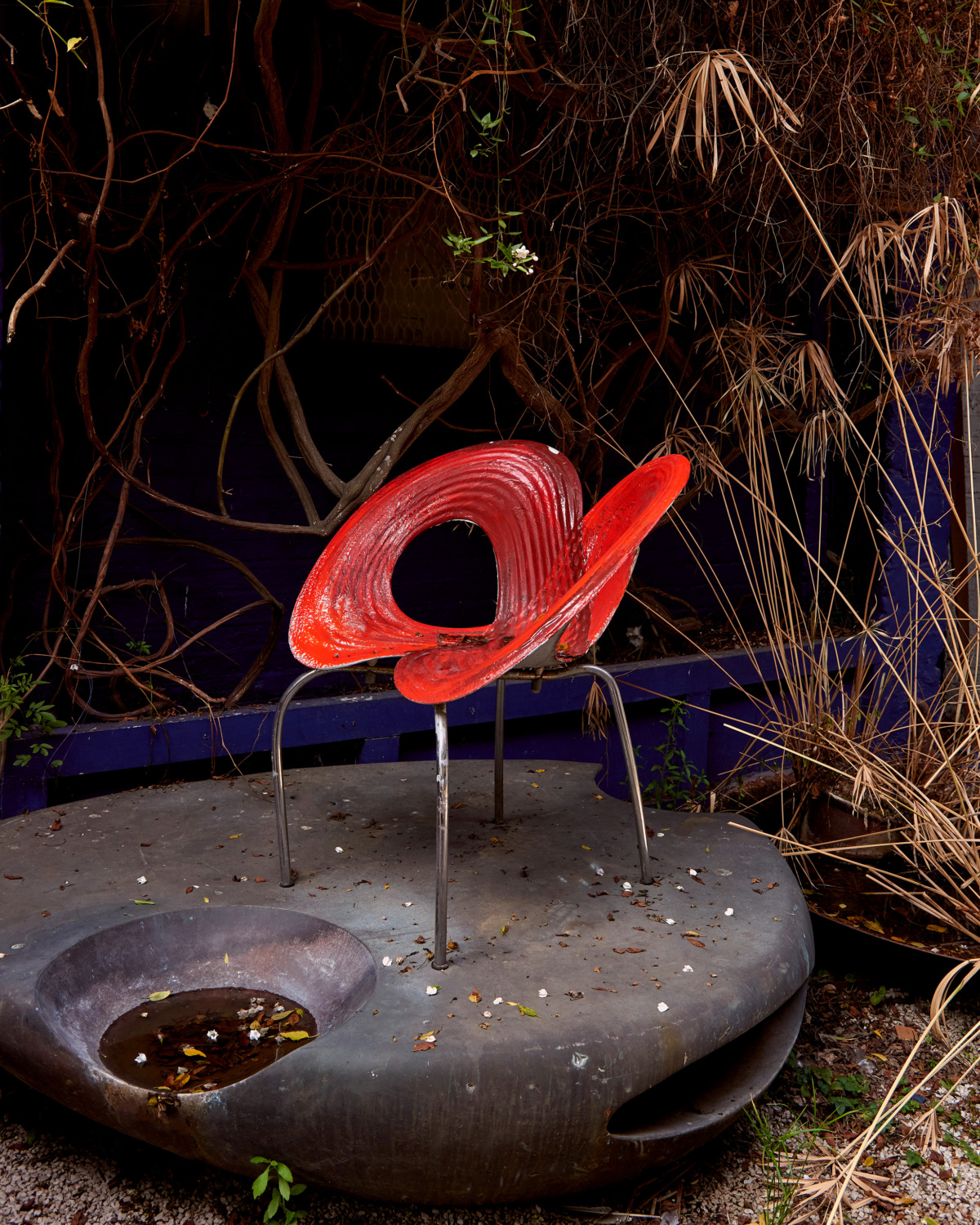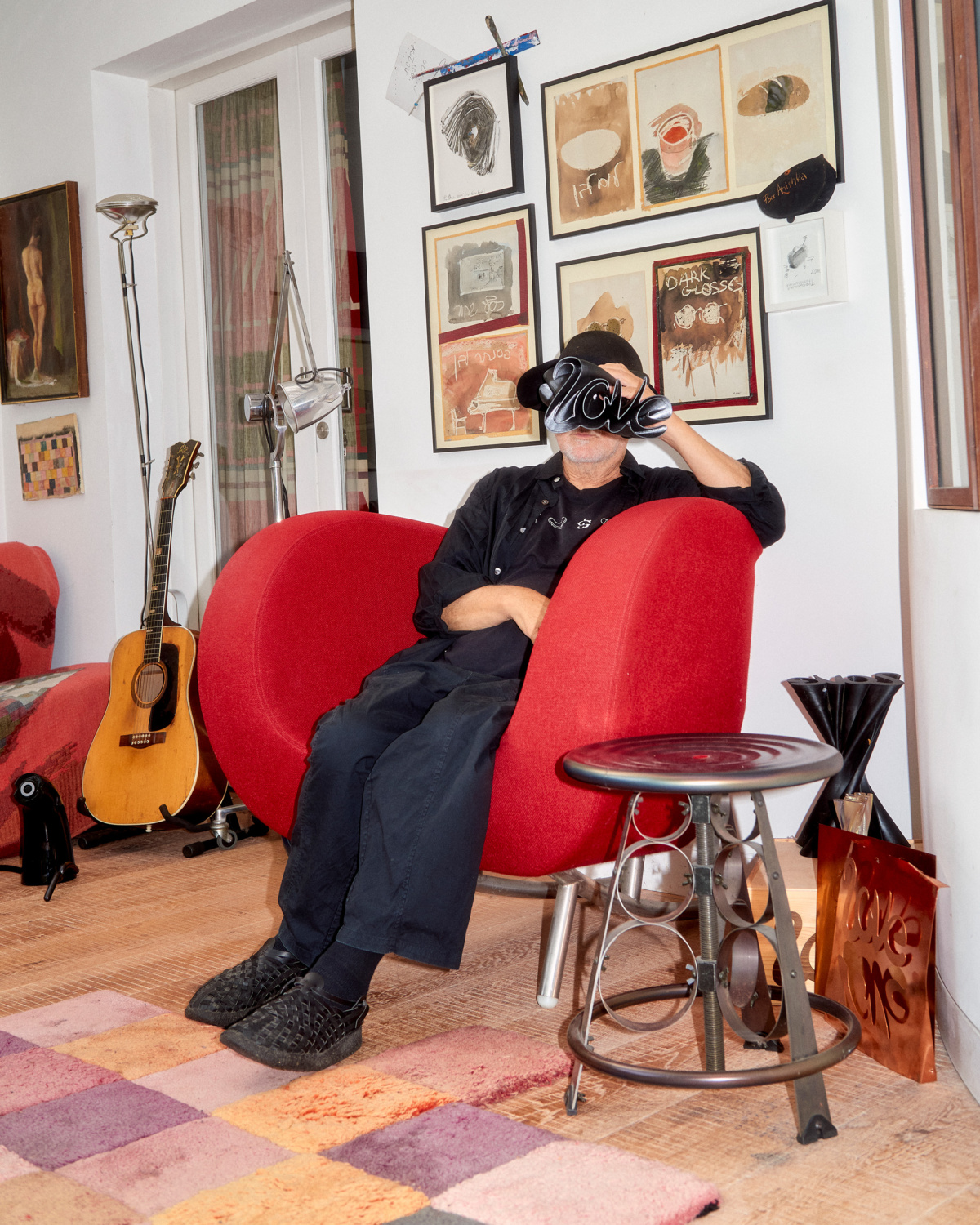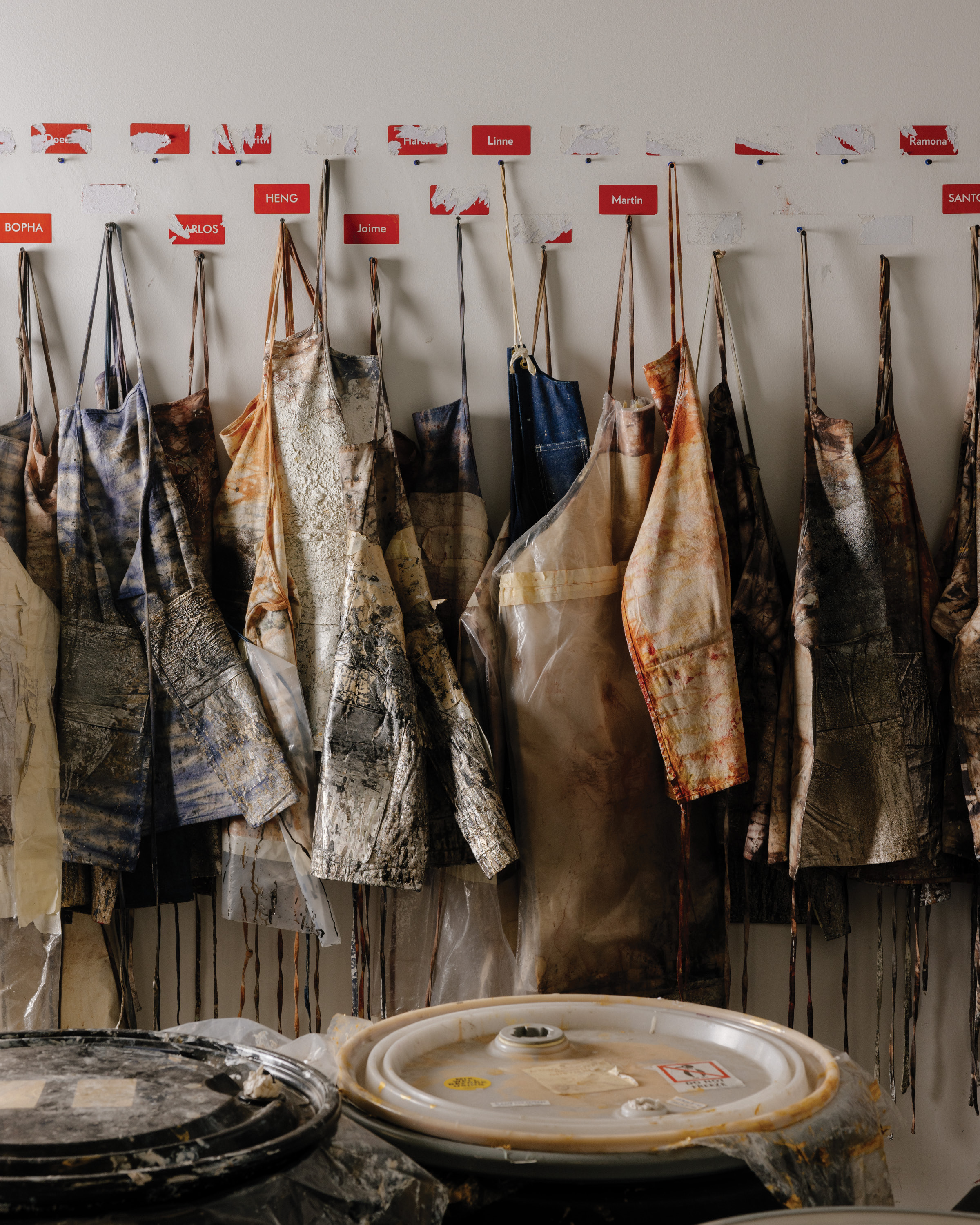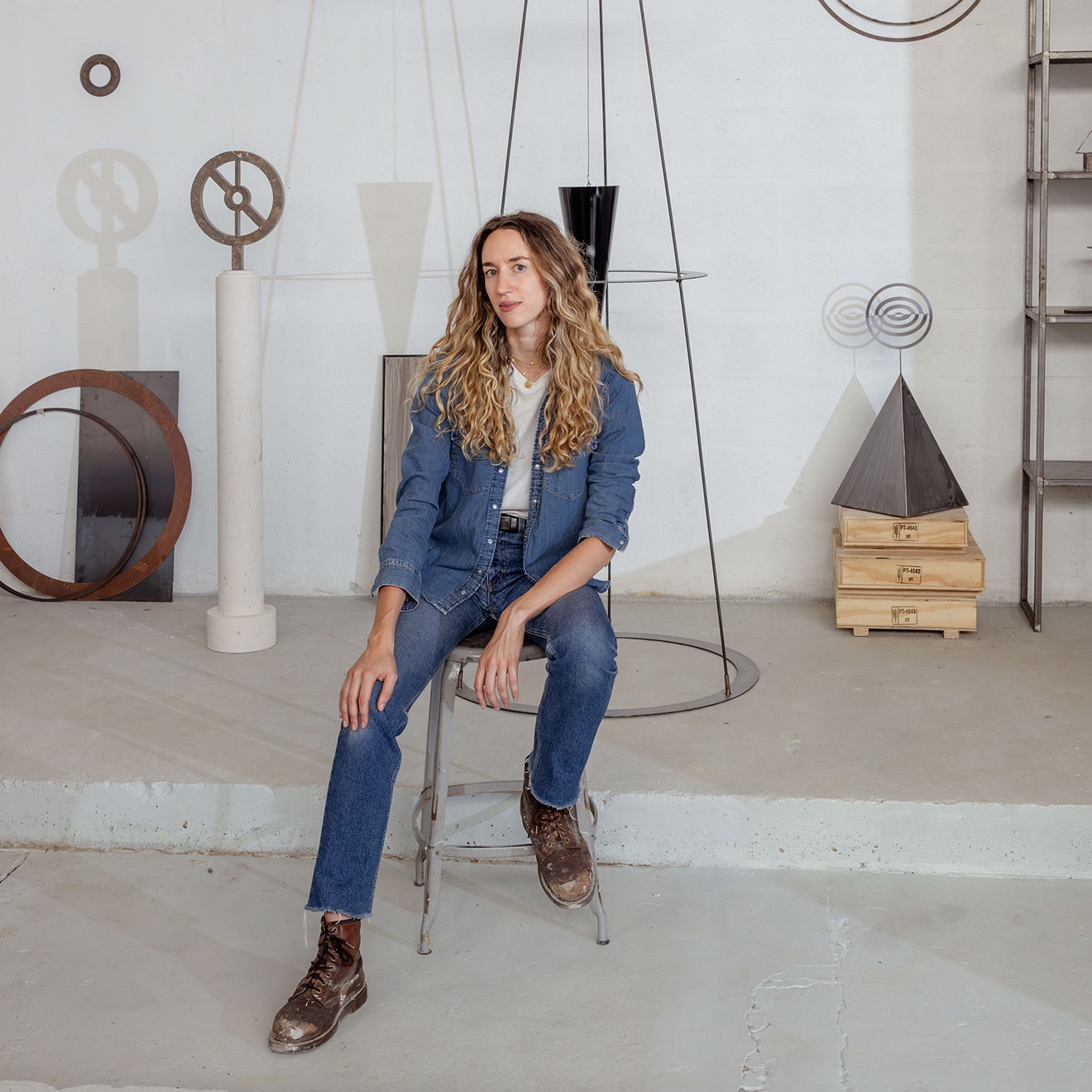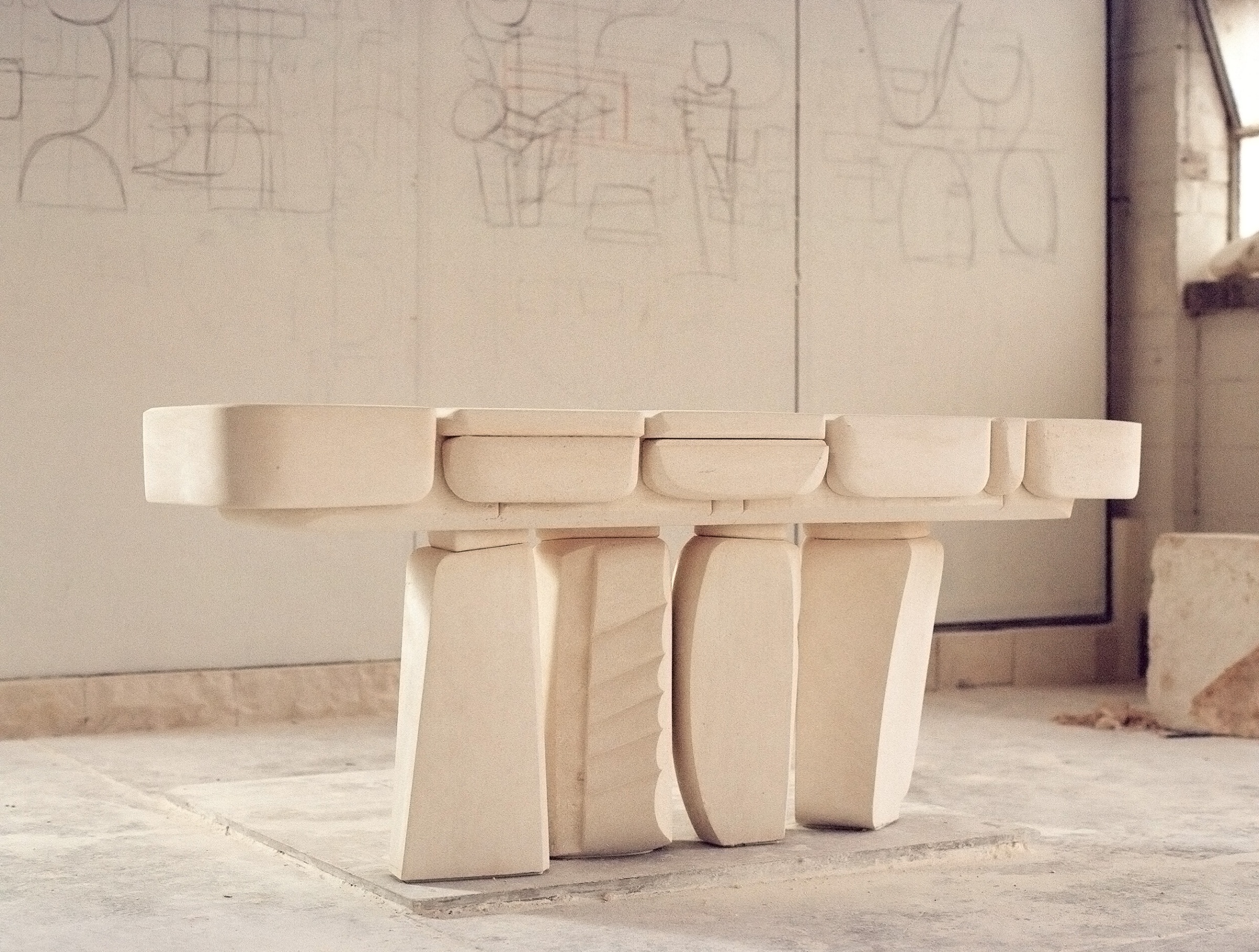When I arrive at Ron Arad’s home studio in northwest London, one of the first things I see is a floating umbrella. In what appears to be a stroke of Mary Poppins-esque magic, it dangles weightlessly above the designer’s head, with its canopy sprung open. “It protects me from the sun,” explains Ron, who has cleverly magnetized the umbrella’s handle so it can be fixed to metal beams that run along the room’s glass-brick ceiling.
It’s a necessary invention, given the number of hours Ron whiles away in this space. When Covid reared its head in early 2020, the world-renowned designer shuttered the main studio in Camden where he works with the rest of his team, and—like the rest of us—hunkered down behind his own four walls. But even as the design industry ground to a halt, Ron kept working away in his home studio. “I never thought it was going to be the space where I spend most of my time. It is remarkable what I can do from here,” he says. “There used to be times when I didn’t know what day it was; there was no difference between Fridays and the weekend.”
This studio is where Ron drew primary sketches of his two-meter-long marble “Love Song” sculpture—now on show at The University of Milan—and where (using commonplace household items) he assembled a test model of the “Morgan Undercover” installation he made for Huntsman tailors. It’s also where he conceived the idea for his latest artwork, “Dubito Ergo Cogito,” or “I Doubt Therefore I Think.” The piece offers a playful take on Auguste Rodin’s 1902 sculpture “The Thinker,” which features a nude male figure perching pensively upon a rock. In Ron’s interpretation the figure is absent, but there is a bronze plinth featuring imprints of his bottom and feet; observers of the piece are invited to sit and strike a pose of their own.
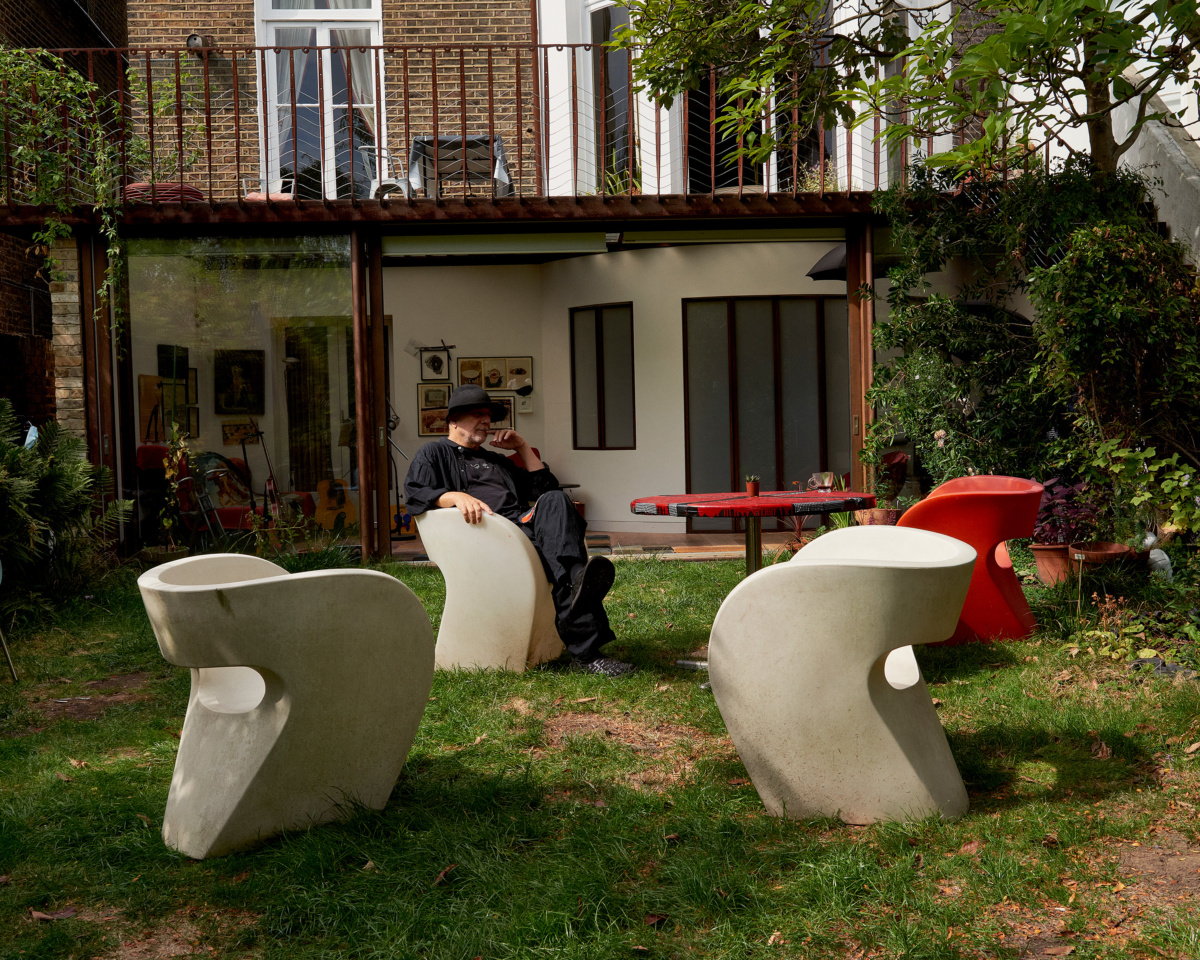
“It’s remarkable what I can do from here,” Ron says of his home studio.
An early prototype of “Dubito Ergo Cogito” Ron fashioned during lockdown now corner of his back garden. It’s surprisingly verdant given the scorching hot drought London has experienced this summer. Around its edges are tall leafy trees, slightly overgrown bushes, and even a blooming patch of delicate pink Cyclamens—a small marvel to Ron, who tells me they’re protected flowers in his home country of Israel.
Standing in the tufted grass toward the rear of the garden, I get to appreciate the studio in full view. The room sits on the house’s ground floor, encased by an elegant Corten steel extension designed by Ron, fabricated in Italy, and shipped back to the UK in pieces. Atop of the extension is a generous balcony fronted by slender Corten railings, which Ron originally wanted to be left open but with the recent arrival of his “very curious” grandson Milo, he decided to install wire cabling (as well as a couple of plastic baby gates).
The studio’s interior is finished simply with white-painted walls and timber flooring, brightened by a rainbow mosaic-style rug Ron made with nanimarquina (whose recent collaborations also include Jaime Hayon.) To one side of the room lies a deep-seated red armchair where Ron takes all his Zoom calls and a sofa hidden beneath a woven throw that depicts a pixelated image of Sandro Botticelli’s painting “The Birth of Venus”—another idea of Ron’s that materialized over lockdown. Above the sofa are a number of drawings Ron did when he first moved to London in 1997, as well as a couple of pieces by his late mother, an equally talented artist.
- One man’s trash might be another man’s treasure, according to Ron. His floating umbrella is a practical design, affixed with a magnet so he can attach it to metal beams overhead to protect himself from the sun.
- The Voido rocking chair is great for outdoor use.
Dominating the other side of the room is Ron’s huge Osvaldo Borsani desk, now weathered and scratched after years of use. It’s surrounded by a somewhat chaotic jumble of items—neon sunglasses, another umbrella, a mock-up of a new lamp Ron’s working on, and even a child’s Hello Kitty-branded violin he discovered on the street. More than 40 years after using items from a scrapyard to create his signature Rover chair, it seems Ron still treasures what other people may consider trash.
When conversation turns to Ron’s creative process, the designer surprisingly tells me envy often drives him. “If I go to an exhibition in a gallery, and there’s nothing that makes me jealous, it’s not a good show,” he says. “If I’m working on something I think: ‘If I saw this in a gallery, would I be jealous?’ If the answer is yes, I’ll do it. If the answer is no, I won’t do it.”
Ron has also always enjoyed making use of new materials and technologies. Earlier this year he teamed up with art production studio Shifting Vision to release his first collection of NFTs. Titled “Reverse Again,” the collection offers a reinterpretation of earlier works of Ron’s that saw Fiat 500 cars being flattened into functionless, two-dimensional forms. I question what in particular encouraged Ron to explore NFTs, an art form that, for many, is still a point of confusion. “It’s the other way around, NFTs are exploring me… The world is changing,” he says.
Ron continues to effortlessly change with it; now that a majority of Covid restrictions have been lifted, he says he’s planning to make a return to his studio proper. With more space, tools, and materials back at his disposal, it’s exciting to think what the designer will create next.
- Ron created this woven throw from a pixelated image of Sandro Botticelli’s painting “The Birth of Venus” during lockdown; above it are some of Ron’s early artworks.
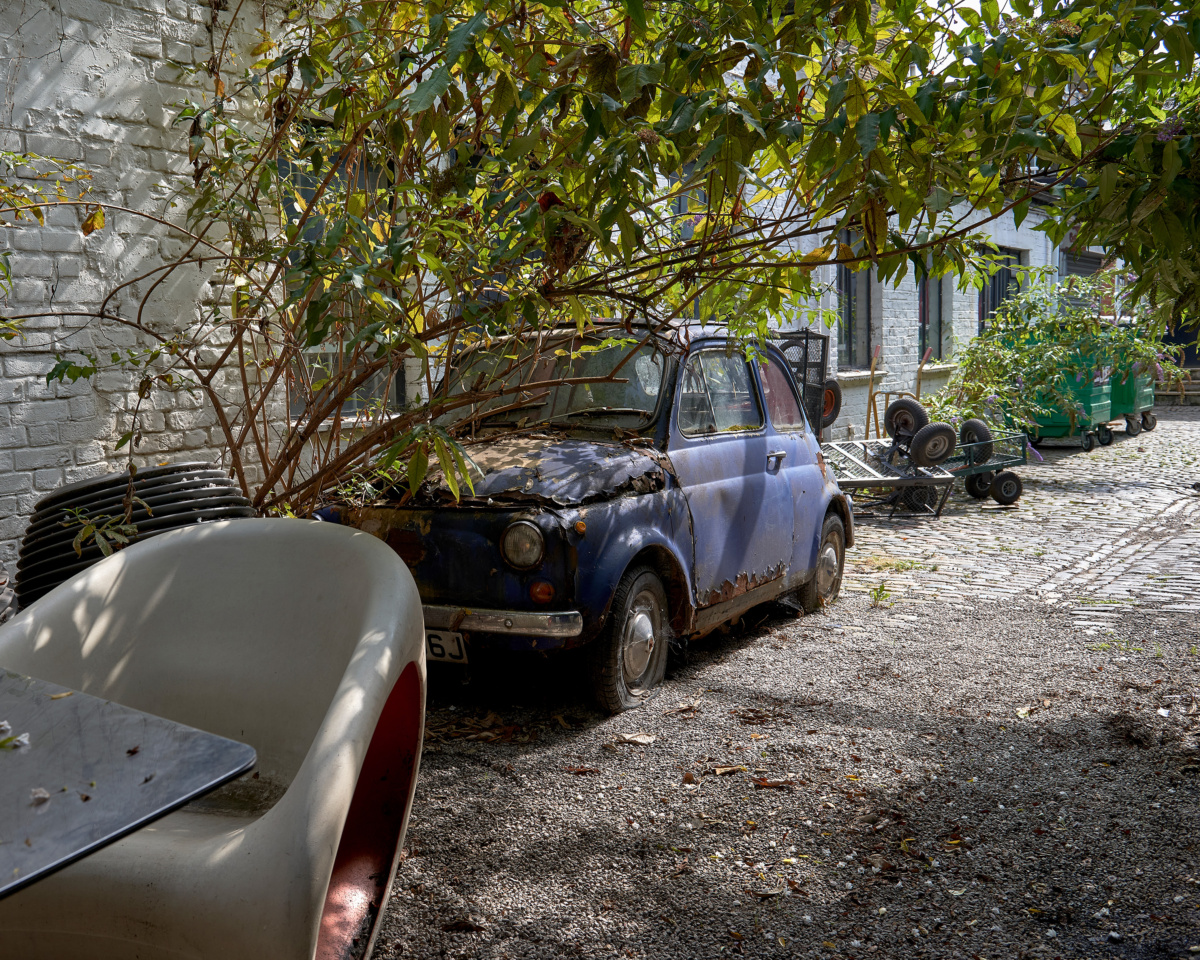
Ron bought this Fiat 500 some 30 years ago after a flight back from Rome when he was quite literally pondering Fiats and some of their disappearance. He shouted to a driver in traffic to see if he would sell it. He would. Today the car is parked in Ron’s driveway, rusting away, no longer functional but, Ron says, delightful. Read the story in detail in Ron’s book In Reverse.
- Ron designed the Ripple Chair (2005) for Moroso. The following year, he collaborated with Issey Miyake to give the chair a fabric cover that could be removed and worn as clothing.
- Ron’s longstanding partnership with Moroso includes celebrated designs like the above Victoria and Albert armchair in red (2000).
A version of this article originally appeared in Sixtysix Issue 09 with the headline “Ron Arad.” Subscribe today.
